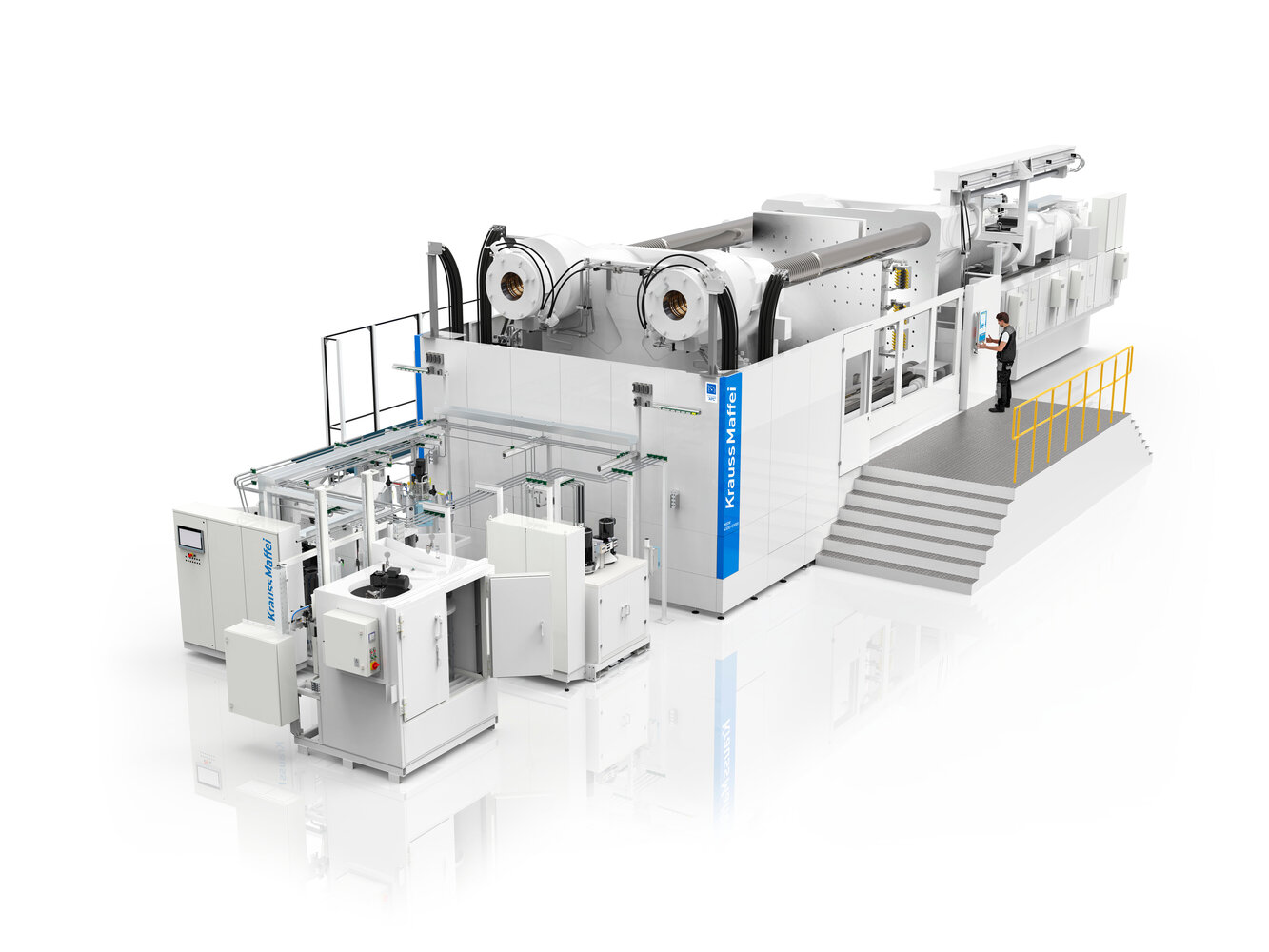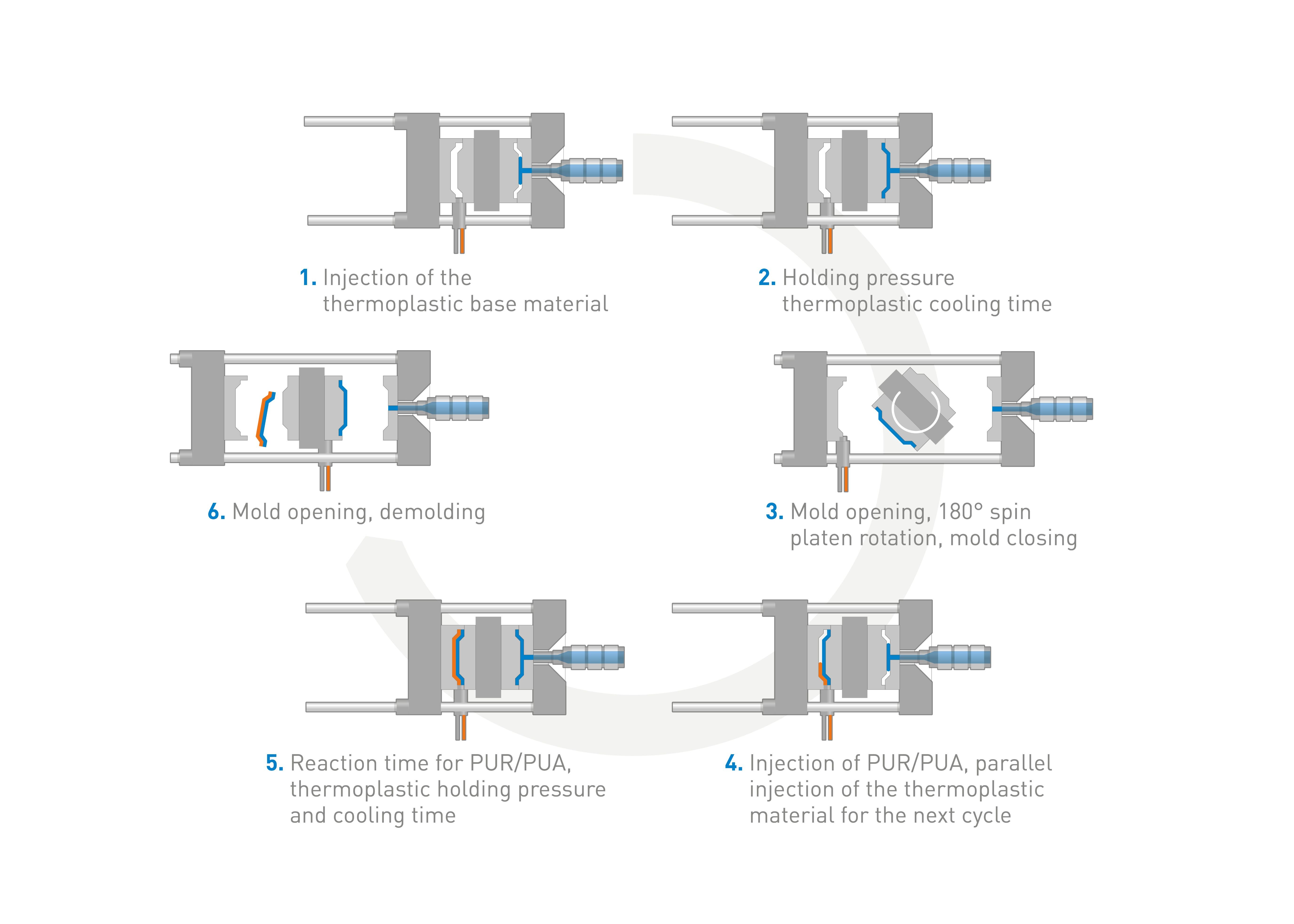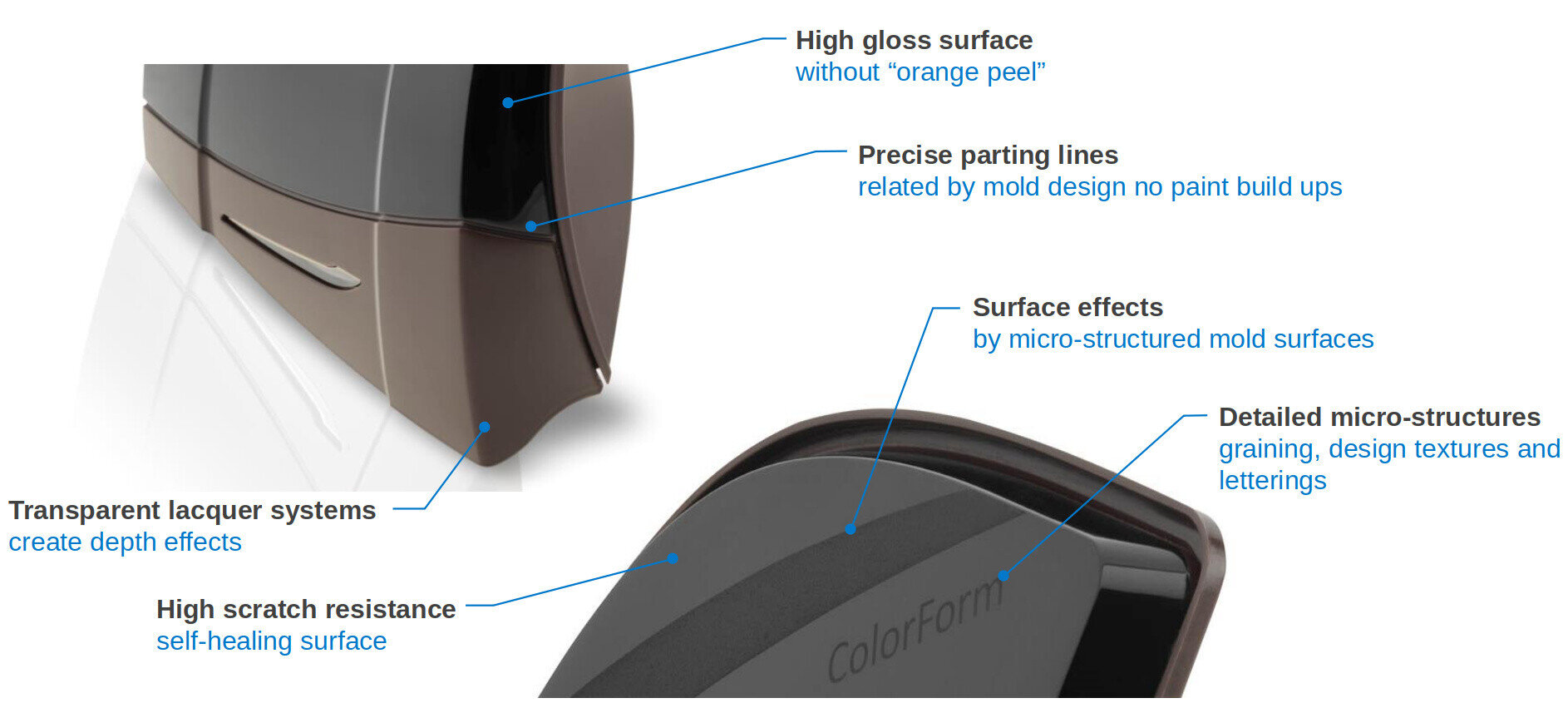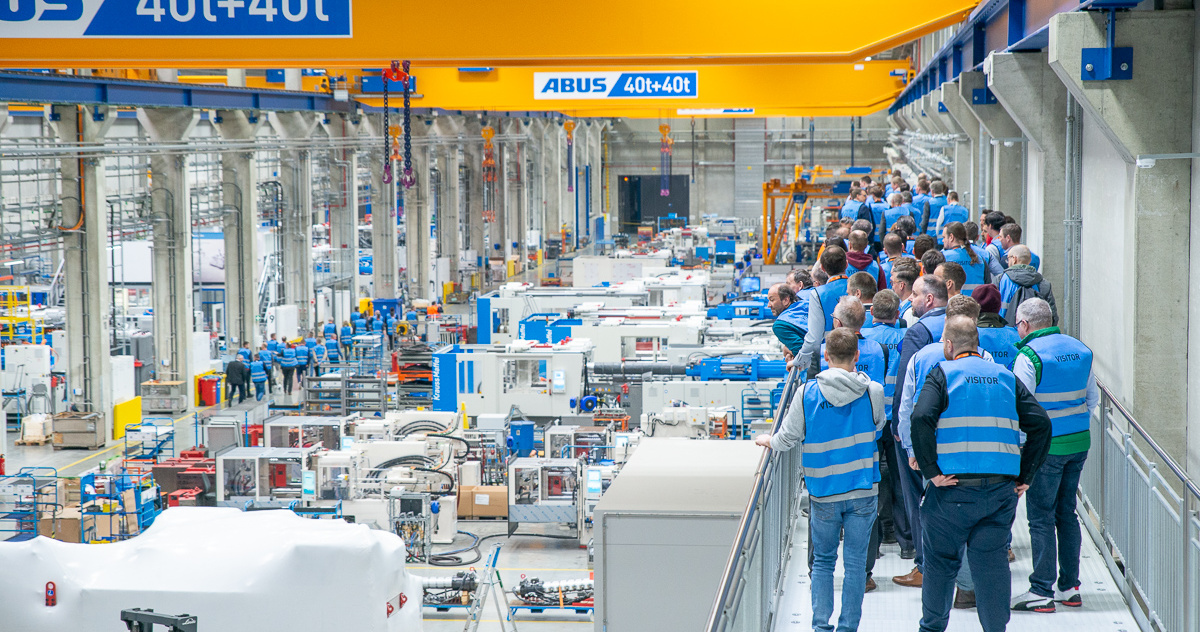ColorForm-technology
Integrated PUR coating in the injection molding machine

Product information
ColorForm is a multi-component injection molding process in which a thermoplastic carrier is flooded with a PUR or PUA coating system.
High-gloss surfaces are created in a single step with solvent-free coating systems. The color spectrum ranges from piano black to transparent. The resulting surfaces are scratch-resistant and have excellent UV resistance. Compact or lightly foamed PUR systems are used in the SkinForm process. These enable scratch-resistant surfaces with soft-touch effects in the same process.
The system consists of a combined IMM and RPM cell. An automation and post-processing system is also required for these high-quality surface parts.
- Reduced manufacturing costs
- Quick colour changes
- Space-saving production design
- Cost-effective implementation of premium surfaces with new effects
- Substitution of conventional painting steps
- Reduced manufacturing costs





